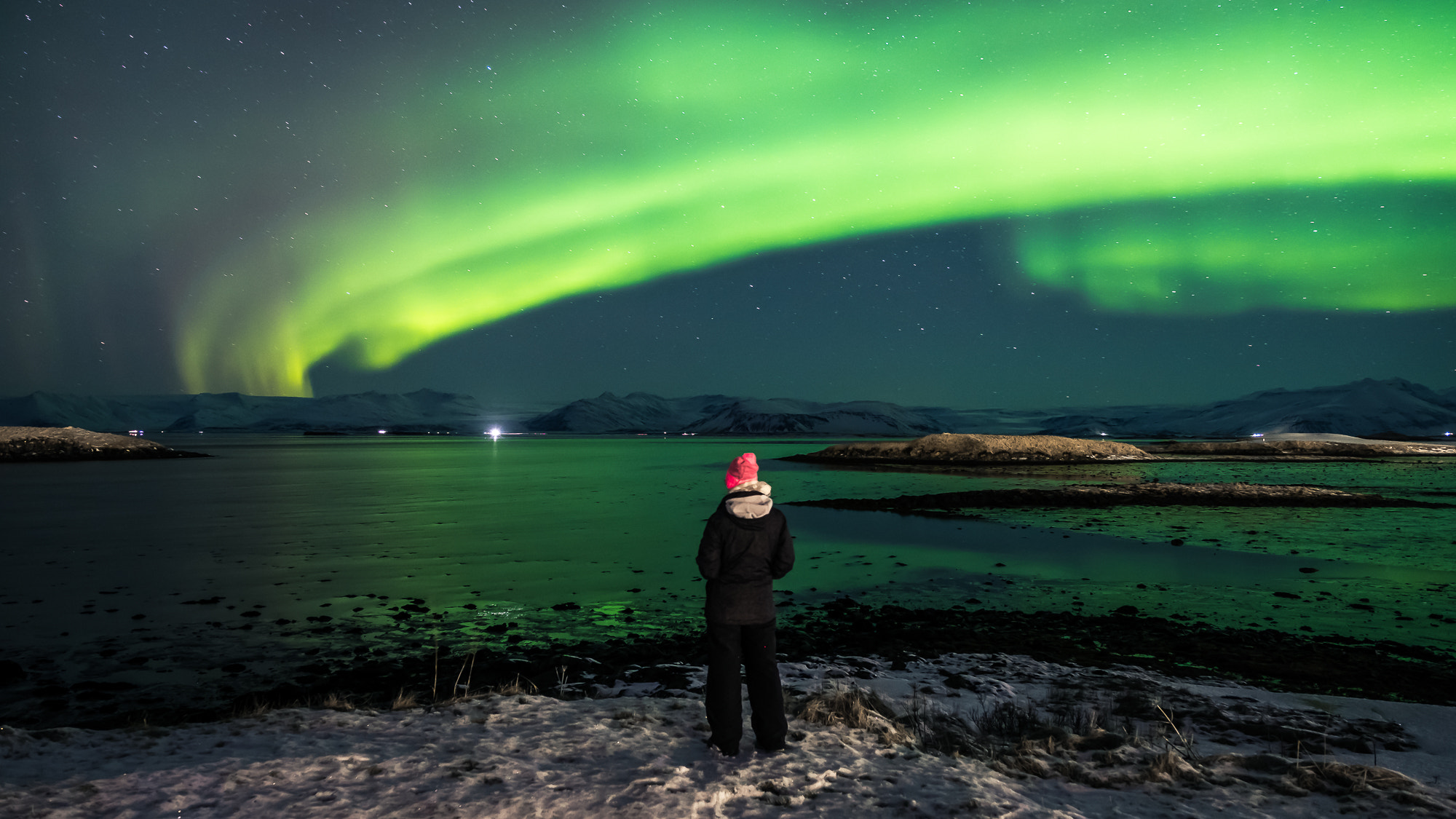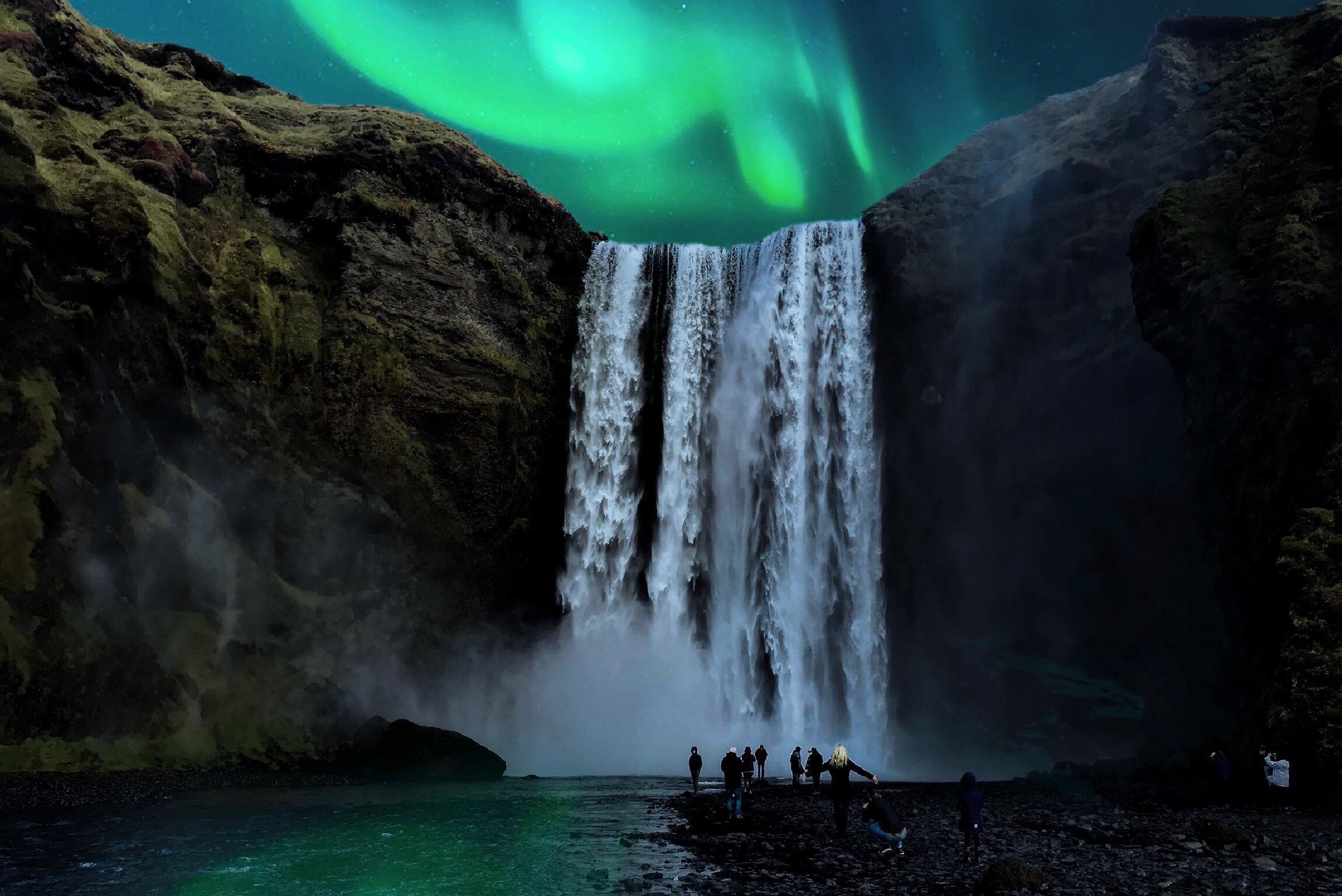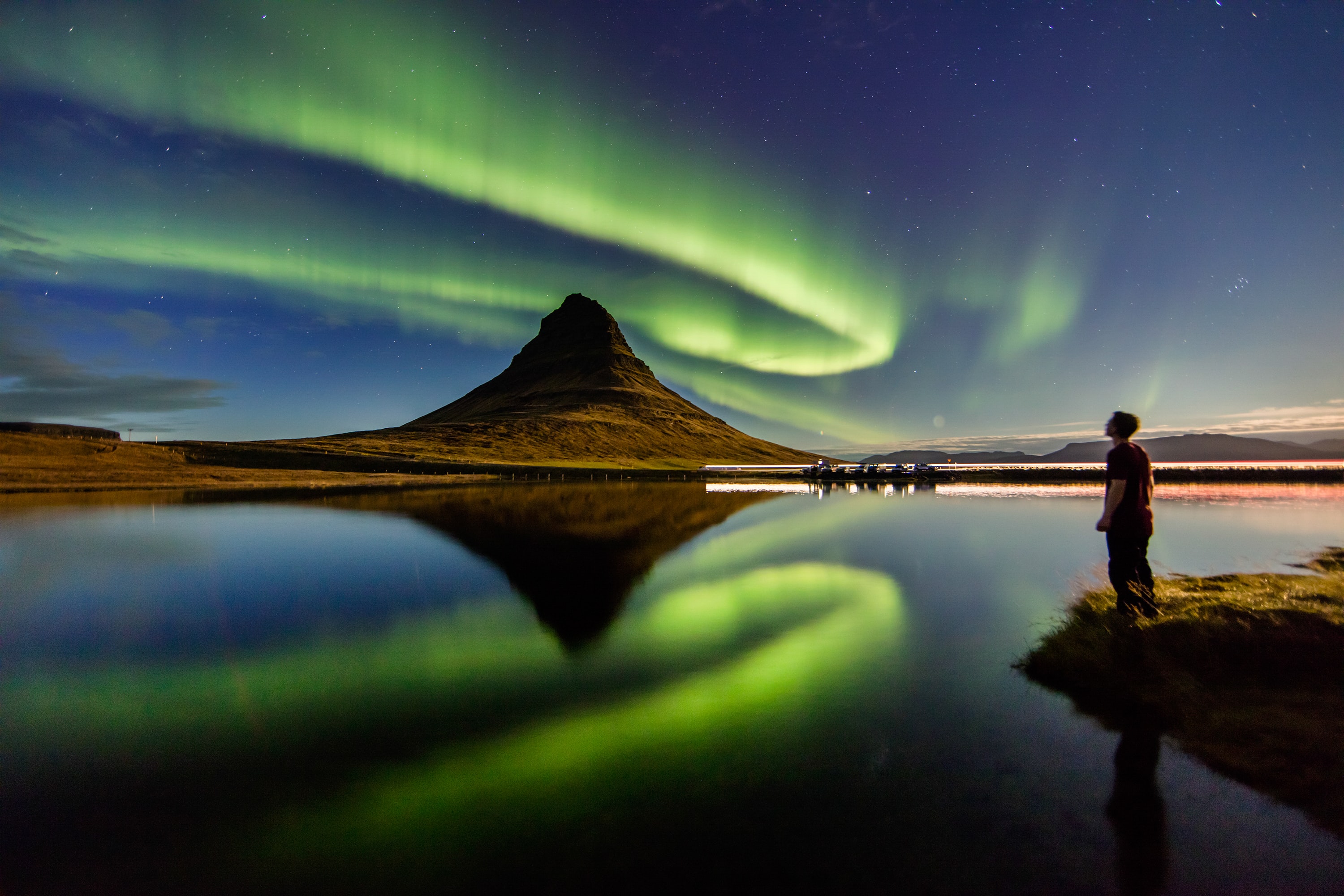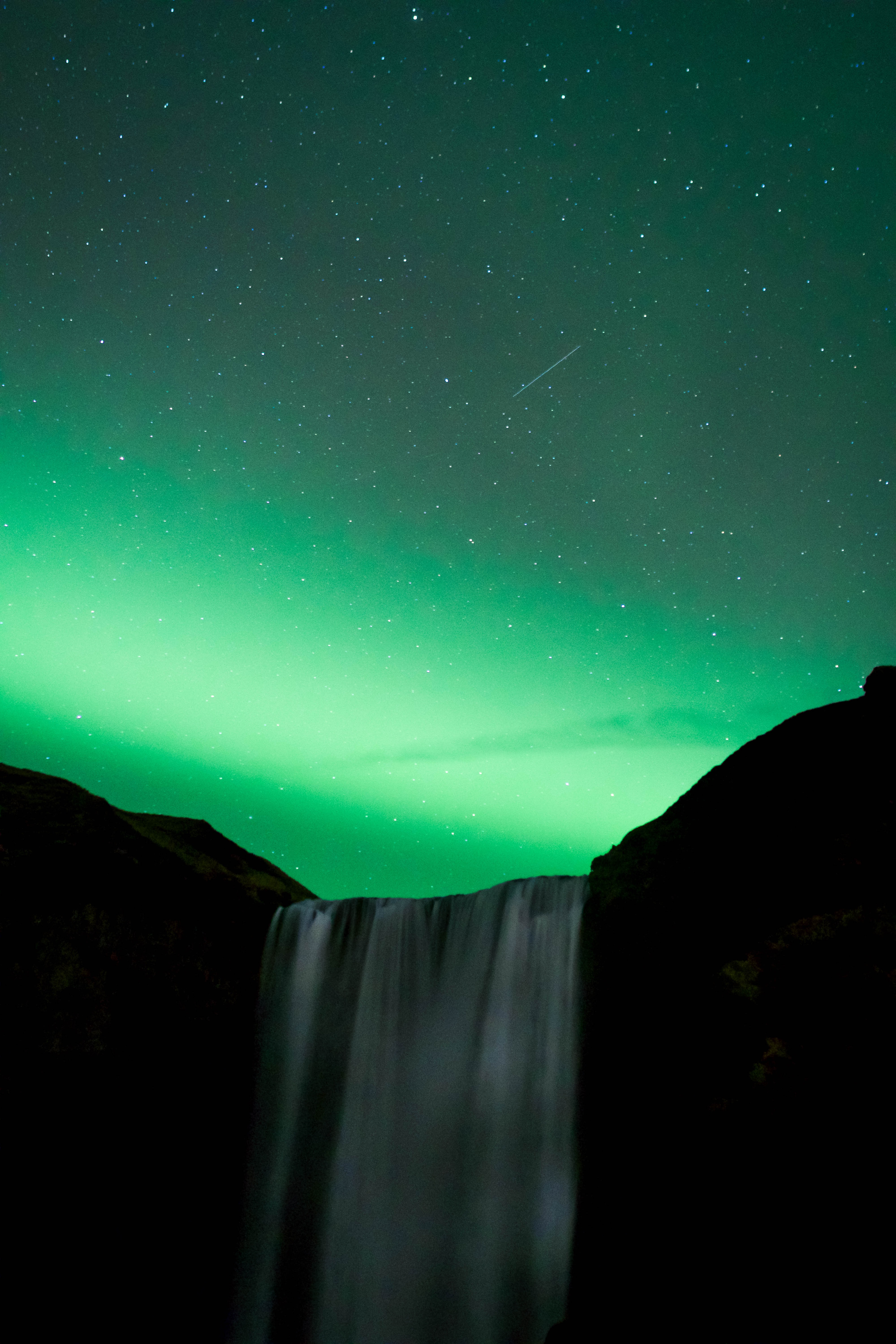Northern Lights in Iceland and Its folklore
Take an informative journey into the spectacular wonders of the Northern Lights. What are the best locations to see them and when? What are the Northern Lights? what were they thought to be?
Northern Lights and Icelandic Folklore
The beautiful country of Iceland is known for many things be it the constantly changing weather, its Viking history, volcanoes or it being the first country to have a parliament. But the one thing that seems to stand out as a sought-after must-see experience in Iceland is the Northern lights.

What were they thought to be? – Folklore and superstitions
It is hard not to stare hypnotized upon the incredible solar phenomenon that is the Northern lights, how these colorful ribbons of light cascade so elegantly across the dark winter sky. It’s even hard not to write about these spectacular wonders so poetically but how else can you describe something that even astounds astronomers and the people that repeatedly see witness them.
For ages the Northern lights also known as Aurora Borealis or Polar lights have baffled the human mind, what is this spectacular light show, where does it come from and why?
In the old days, many have tried their best to explain its meaning and its origin.
In Scandinavia, many believed them to be a sign of big gatherings of herring and fishermen took them as an indication of big catches of fish.
Swedes on the other hand thought that a frequent sighting of the Northern lights during the winter would provide them greater crops the following year.
The Norse folklore has a more celestial belief to the Northern lights where they were thought to be the sunlight reflected from the shields of the Valkyries on their way across the sky to their final resting place in Valhalla. Some say it was also believed to be the Bifrost bridge spanning the gap between the 9 realms and Valhalla.
While in Asian cultures the Northern lights have been believed to bring fortune and fertility for women struggling to conceive a child….. Although one does not deny the appeal of trying to conceive a child under the beauty of the Northern lights and a Starbright sky I’m sure there are no valid claims to its validity.
Icelandic culture was no exception to these kinds of superstitions as many believed the presence of the Northern lights would reduce the pain of childbirth…..I am sure many women today will laugh at that fact and be thankful for the wonders of an epidural. But it was told that the childbearing mother was not to look at the Northern lights as it could risk the child being born cross-eyed.

What are they?
Although most of the aforementioned theories and myths for the Northern lights may sound pretty far-fetched and ludicrous to most people the scientific explanation still holds an astonishing explanation.
Earth as many know has two magnetic poles, north and south, the magnetic field produced by the earth’s core protects us from the immense forces of space such as solar winds. Solar winds from the sun carry protons and electrons towards the earth which collide with the earth’s magnetic field where the solar winds are pushed away by the magnetic field. The Magnetic field steers the protons and electrons towards the magnetic poles, north, and south where they make their way through the atmosphere and that is where things get exciting. The electrons and protons pass collide with the gases, that make up the air we breathe, for example, they release energy in the form of light. The changes in color in the Northern lights are affected by the types of gas particles the electrons and protons collide with.

Where and when are they most visible?
The northern lights are a very unpredictable phenomenon as they are governed by the huge forces of the sun’s solar activity. The northern lights are usually visible from the end of August until the beginning of April. The light ribbons span the most northern hemisphere and are also visible in places such as Alaska, Greenland, Finland, and the northern part of Russia to name a few. Visibility of the northern lights is however highly dependent on a few factors such as a dark clear sky because it would be quite difficult to see them during a cloudy day as one would expect. Light pollution is also a key factor when it comes to visibility, many Northern light hunters chose to take Northern Lights tours where groups of people are driven away from the city center light pollution to a more remote area where the lights are supposed to be more visible to camera lenses and the naked eye. In many cases, in the previous years, the northern lights have been so active that light pollution in the capital region has not prevented visibility and in few a cases, the city council decided to turn off all the street lights to allow people to enjoy their majesty without any distractions (the lack street lights did, however, cause a lot of traffic accidents in the city center during that time, but the lights were pretty).
But in short, the ideal time and location to see the wonders of the northern lights would be to drive into Iceland’s beautiful countryside during the high peak of winter when the days are short and the colder temperatures provide a less cloudy night sky.
You can also find some websites and mobile apps that can offer a Northern Light forecast that is somewhat accurate, but they can usually only give predictions one hour or so in advance.
Magical places to experience the northern lights.
Iceland is filled to the brim with jaw-dropping sceneries, waterfalls, and landscapes like no other. Experiencing these places could only be surpassed by witnessing them under the alluring splendor of the northern lights swaying above you with a magnificent backdrop of twinkling stars in the dark sky.
When heading out on your self-drive journey around Iceland’s constantly winding ring road every twist and turn reveals a different landscape, different mountains, and very often constantly changing weather.
It is safe to say that no place in Iceland is identical to another one but some are hard not to consider as an ideal spot to visit even though the sun is setting and it is getting late, because of how magical their experience is in the presence of the northern lights. And even though you won’t be lucky enough to see them, the locations themself will not leave anyone wanting.
Snæfellsnes peninsula
The entire peninsula is a place that everyone visiting Iceland must visit. Each small town in Snæfellsnes is surrounded by stunning mountains and filled with beautiful old houses owned by very kind Icelanders that will gladly share their knowledge.
Jökulsárlón
Jökulsárlón, also known as the Glacier Lagoon is part of the Vatnajökull national park located in the south-east of Iceland. The crystal-clear blue water and icebergs from the lagoon have their roots from Breiðamerkurjökull. Every year on the 15th of August there is a big gathering of people at Jökulsárlón for the annual fireworks show, at that time there is still a possibility to see the wonders of the Northern lights.
Hellisheiði look-out spot
Hellisheiði is a small mountain pass just 25 minutes outside Reykjavík, just before a small town called Hveragerði. At the top of the mountain pass, there is a look-out area where you can park and enjoy the view.
Esja mountain
Esja mountain is one of Reykjavík’s most beautiful landmarks whether it is covered in a dusting of snow during the wintertime or showing its green beauty during the summertime. At 914 meters to the highest peak, it’s easy to see why this mountain is ideal for Northern lights viewing.
Þingvellir National Park (Thingvellir)
Þingvellir is one of the places in Iceland that holds the most historical importance. In the year 930, the world’s first parliament was founded there. Þingvellir is also home to a huge variety of geological wonders and a vast variety of bird- and wildlife. Þingvellir is located on the Mid Atlantic Ridge and where the tectonic plates meet is very visible to the naked eye.
Gullfoss
Gullfoss or “Golden Falls” is one of the biggest and most beautiful waterfalls in Iceland. Located in the south of Iceland this waterfall attracts a lot of tourists all year round and for an obvious reason. The massive amount of water that plummets down the falls each second is astounding. The canyon it is located in is a wonderful place to spend some time in and admire the beauty and the power of nature.
Reynisfjara
Reynisfjara is the most known black sand beach on the southern coast of Iceland. Located about 10 minutes west of the town of Vík. The tremendous waves hitting the huge cliffs of Reynisfjall mountain are a big attraction to most people visiting Iceland. The beach is however filled with warning signs to ensure the safety of visitors walking on the beach as the waves and the tide are so powerful that many people have been washed away. And yet this wonderful beach is an ideal spot to go stargazing and Northern lights hunting as the surroundings are breathtaking and the sound of the ocean truly makes for a great experience during the nighttime.
Ásbyrgi
Ásbyrgi is a must-see wonder for anyone visiting Iceland. Located in the northeast of Iceland less than one hour from Húsavik. Ásbyrgi is a naturally formed glacial canyon filled with wildlife and woods. The Icelandic folklore says that the canyon was formed when Sleipnir, Odin’s horse, stomped on the ground with its immense force creating the huge hole in the landscape that now is Ásbyrgi canyon. We do consider Ásbyrgi to be one of Iceland's, must-see places!
Grótta
Grótta is a small land-tied island in Seltjarnarnes, a small town in the capital region. Grótta is a very popular look-out place for stargazers and Northern light hunters, and even in the absence of both those sights the area and the view will not leave anyone with a frown.
Látrabjarg
Látrabjarg is located in the westernmost point of Iceland, so far west that on a clear bright sky you can see all the way to Greenland. This spectacular place is a popular destination for many wildlife photographers and ornithologists as Látrabjarg’s broad cliffs are home to millions of birds such as the Puffin. It may be a long drive, some and asphalt and some on winding gravel roads but you will not want to miss out on this spot.
Blue Lagoon
The Blue Lagoon is well known to most people that travel to Iceland, and more often than not their first destination after they land since it is comfortably located only 20 minutes from Keflavík International airport.
Kleifarvatn and Krýsuvík
Krýsuvík is a geothermal area located in the Reykjanes peninsula about 40 minutes from Keflavík. This area is full of wonderful hiking paths and hot springs that you shouldn’t miss out on seeing. A little bit further down the road is a big lake called Kleifarvatn. At 8 square kilometers in size it may not be enormous but the sheer beauty of the surroundings

Written by Ingimundur S.
